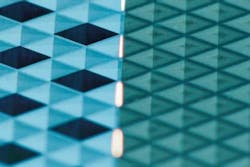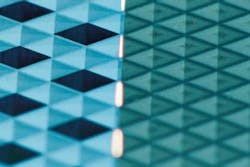Laser structuring technique could triple productivity for automakers
Car makers strive to design vehicle interiors that conveys an impression of superior quality. The finer the texture of the plastic surfaces, the closer they approximate the appearance of leather or other high-quality materials. It takes auto suppliers a matter of minutes to fabricate this kind of surface. Manufacturing the instrument panel via injection molding, for example, takes only 60 seconds.
Producing the metal tools required for this purpose takes up to four weeks for the tool structuring itself. The three-dimensional texturing is either etched onto the tool in dozens of individual steps or created by means of a laser structuring process with ablation rates in the region of approximately 1 mm3/min.
The eVerest research project, funded by the German Federal Ministry of Education and Research (BMBF), joins five companies and three research institutions to radically improve laser structuring technology with resolutions in the micrometer regime.
To optimize the processes investigators evaluated concepts for highly dynamic focusing using convex piezo mirrors. They eventually succeeded in tripling the throughput using innovative scanner technology developed by Scanlab (Puchheim, Germany).
The Fraunhofer Institute for Laser Technology (Fraunhofer ILT; Aachen, Germany) process engineers employed a particularly powerful, actively cooled fiber-coupled ultrashort-pulse (USP) laser from Amphos (Herzogenrath, Germany) to obtain the same ablation rate per watt as that offered by the nanosecond laser. The USP laser makes it possible to reduce surface roughness to <0.5 µm.
For quality assurance, the team evaluated two fiber-coupled optical coherence tomography (OCT) systems from Precitec Optronik (Neu-Isenburg, Germany) for this purpose. The inline system facilitates resolutions of 5 µm, while the post-process achieves as low as 1 µm.
The individual components were incorporated into a machine based on the Lasertec 125 from DMG Mori (Bielefeld, Germany). The developers had two goals—the machine should be easy to operate and the number of processes should be reduced to a minimum.
The software plays a key role in making the fully automatic eight-axis machine easy to use. The team at RWTH Aachen University (also in Aachen) developed special software tools that enable users to precisely simulate the desired structures on the surfaces and visualize their appearance in real time.
Reduced reworking and creation of selective polishing effects through the sequential process of USP laser cleaning and USP polishing after structure generation is shown. (Copyright: Fraunhofer ILT, Aachen, Germany/Volker Lannert)
The Fraunhofer ILT engineers have filed a patent application for the USPlaser polishing technology developed as part of the eVerest project. The process is now being tested in collaboration with partners at Volkswagen (Wolfsburg, Germany), but the potential applications of the core technology extend to embossing rollers in the printing industry, arge bearings for rotor shafts in wind turbines, and structured and functional surfaces required across a broad variety of sectors.
The eVerest project coordinated by Project Management Agency Karlsruhe (PTKA) includes project partners Sauer (Stipshausen, Germany; coordinator), Amphos, Scanlab, Precitec Optronik, Volkswagen, Fraunhofer ILT, the Photonics Laboratory at the Münster University of Applied Sciences (Münster, Germany), and the Computer Graphics and Multimedia group at RWTH Aachen University.
For more information, please visit ilt.fraunhofer.de.

